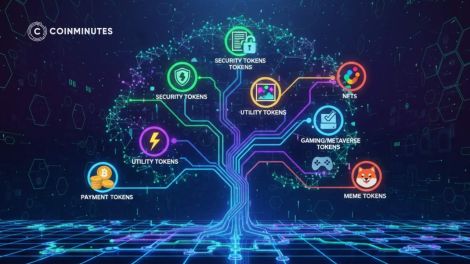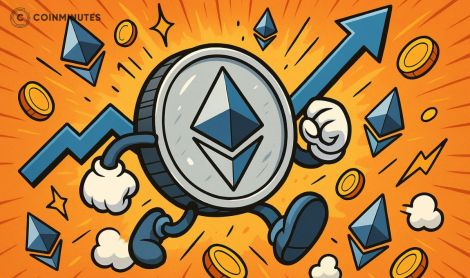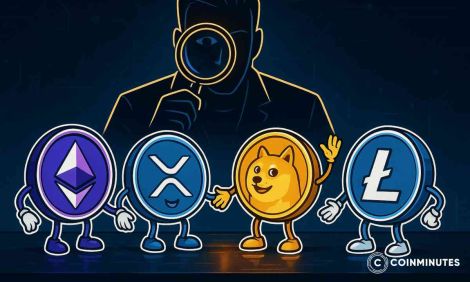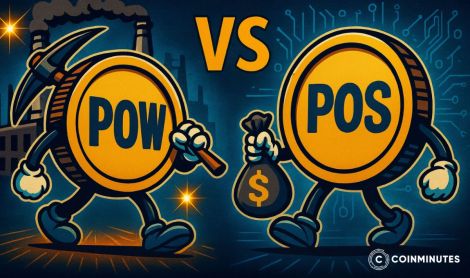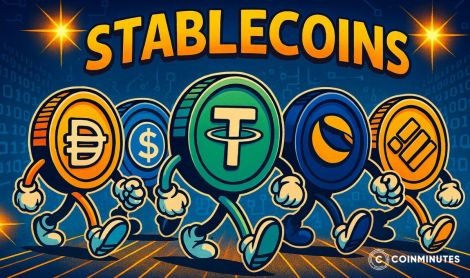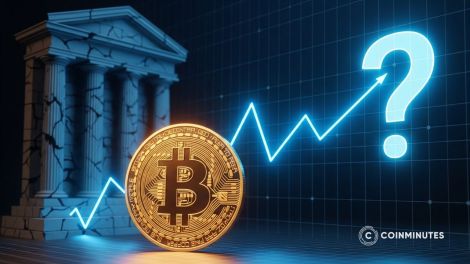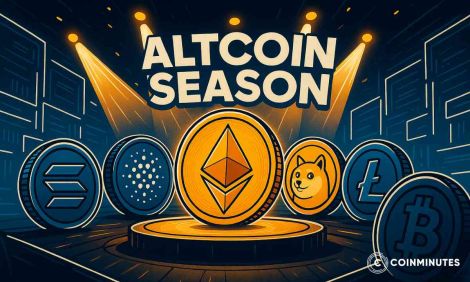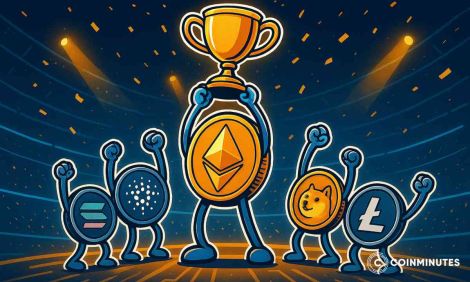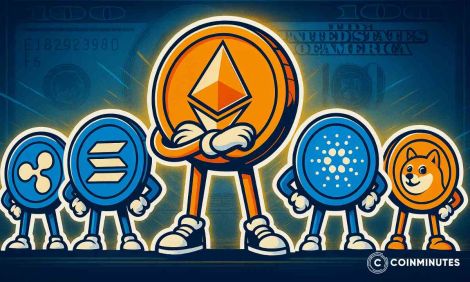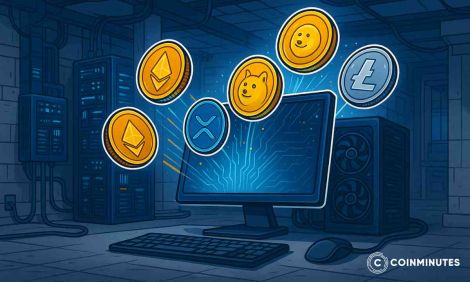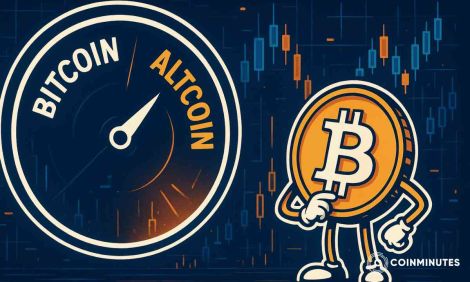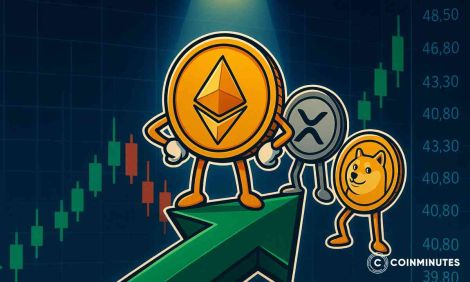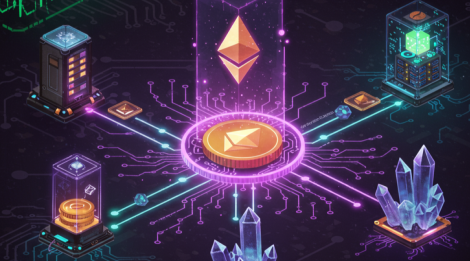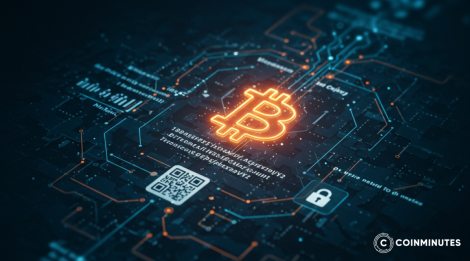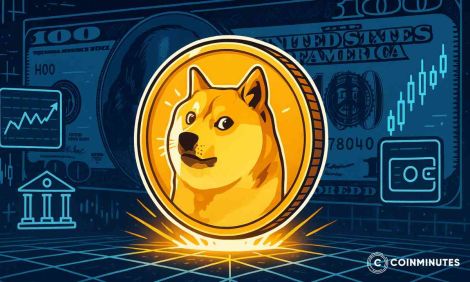Everything About Cardano (ADA): The Science-Driven Blockchain Shaping Crypto’s Future

Welcome to CoinMinutes. You've probably heard of all the "Ethereum killers"—the blockchains that claim to be faster and cheaper than Ethereum. But one of them, Cardano (ADA), is completely different from the rest.
In a crypto world that's obsessed with "moving fast and breaking things," Cardano is the slow, methodical, and academic one. This makes it incredibly polarizing. Its critics call it a "ghost chain," while its massive, loyal community believes it's the only project being built correctly for the long term.
I've followed this project for a long time, and I find its huge bet on science and patience fascinating. This guide will break down exactly what Cardano is, how its unique tech works, and what it's trying to build, all in plain English.
Definition of Cardano
Let's get the simple definition out of the way first. Cardano is a Layer 1, Proof-of-Stake blockchain. That's a handful of jargon, so let's break it down simply.
-
Layer 1 just means it's a foundational blockchain, like the operating system on a computer. It's the base layer that other applications and tokens can be built on top of.
-
Proof-of-Stake is its security model. Unlike Bitcoin, which uses an energy-guzzling process called "mining" (Proof-of-Work), Cardano is secured by people who lock up their own money (their "stake") to prove they're trustworthy. We'll get into that more later.
Its native cryptocurrency, the coin that runs the network, is called ADA.
The project's main goal is to be a highly secure, scalable, and environmentally sustainable platform for complex financial and social applications. But its real difference, the thing that makes it unique, is its philosophy.
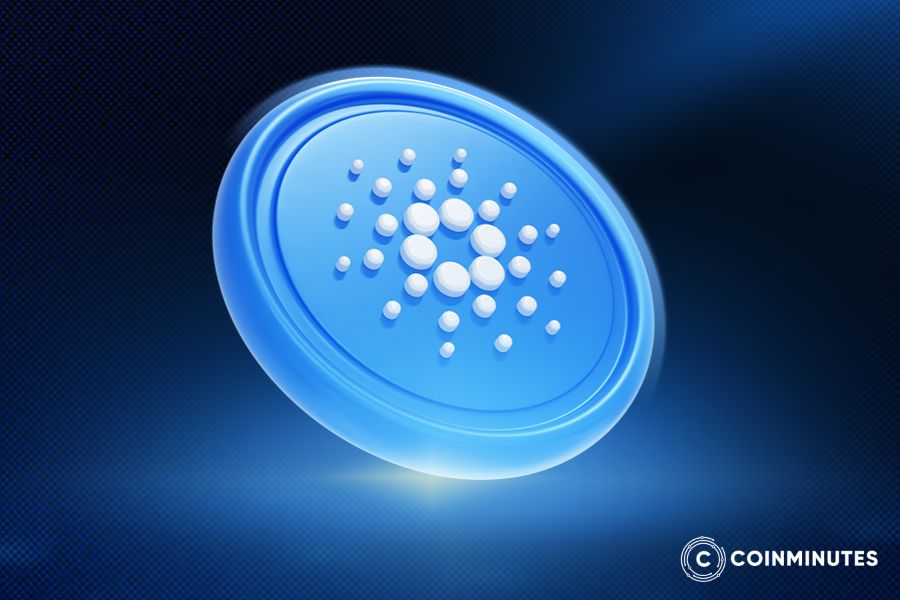
Most blockchain projects are built by developers, launched quickly, and then fixed and upgraded as problems arise. Ethereum launched, found its limits, and is now trying to upgrade its engine while the car is running. Solana launched, went super fast, and then its engine blew up a few times.
Cardano's approach, which I find really interesting, is the complete opposite. It's more like building a bridge or an airplane. You don't just "wing it." Cardano was designed from the ground up by a global team of academics, scientists, and cryptographers. Every single core component of the network—from its consensus mechanism to its wallet security—started as a formal academic paper. It was submitted to scientific conferences, torn apart by other experts in the field, and only after it passed that peer-review process did they start writing the final code. This is what they mean by "science-first." It's an attempt to build a global financial system with the rigor of an aerospace company.
The Origins and History of Cardano
To understand why Cardano is the way it is—why it's so slow, so methodical, so academic—you have to understand its founder and its unique development roadmap.
The Founders
Cardano's history begins with one of the most well-known, and in my opinion, most outspoken figures in crypto: Charles Hoskinson.
This part of the story is crucial. Charles Hoskinson was one of the original eight co-founders of Ethereum back in 2013-2014. He was in the room with Vitalik Buterin and the others when the "world computer" was just an idea. According to crypto legend, Charles had a major disagreement with Vitalik about the future of the project. Hoskinson apparently wanted to take venture capital money and build Ethereum as a for-profit, enterprise-focused company. Vitalik Buterin insisted on it being a non-profit, decentralized foundation.
Vitalik won, and Charles Hoskinson left Ethereum in 2014.
After leaving, he founded IOHK (Input Output Hong Kong), a blockchain research and engineering company. In 2015, IOHK began work on Cardano. This was his second chance to build a global smart contract platform, but this time based on all the lessons he'd learned from Ethereum's chaotic, fast-moving development. The goal was to build a platform that fixed Ethereum's perceived flaws: its lack of a clear long-term roadmap, its energy-hungry PoW model, and its "build-it-and-fix-it" culture.
The project isn't just run by IOHK. It's officially supported by two other main entities: the Cardano Foundation (a non-profit based in Switzerland that promotes adoption) and Intersect, a new member-based organization that is being set up to take over community governance.
The Cardano Roadmap
This is a famous part of Cardano's lore. Instead of just building features randomly, the entire development plan was laid out from the very beginning. It's famously broken down into five "eras" or phases, each named after a prominent historical figure:
-
Byron (Foundation): This era (which lasted from 2017 to 2020) was the launch. The network went live as a simple, federated chain. It was basically just a ledger for sending and receiving the ADA token, with the blocks being created by the founding entities.
-
Shelley (Decentralization): This was the big one. The Shelley upgrade, which rolled out in 2020, was when the training wheels came off. The network transitioned from a centralized system to a fully decentralized Proof-of-Stake network, with hundreds of community-run "stake pools" taking over the job of creating blocks.
-
Goguen (Smart Contracts): This was the most-anticipated phase, the one everyone was waiting for. The "Alonzo" hard fork in September 2021 finally introduced smart contract capability to the network. This is what allowed developers to start building dApps, DeFi, and NFTs on Cardano.
-
Basho (Scaling): This is the current era of focus. Basho is all about improving the network's performance, speed, and ability to handle a high volume of transactions. This includes the development of its Layer 2 scaling solution, Hydra.
-
Voltaire (Governance): This is the final and, in my view, most important era. Voltaire will introduce a complete on-chain governance and treasury system, turning over full control of Cardano's future (and its community-run bank account) to the people who hold ADA.
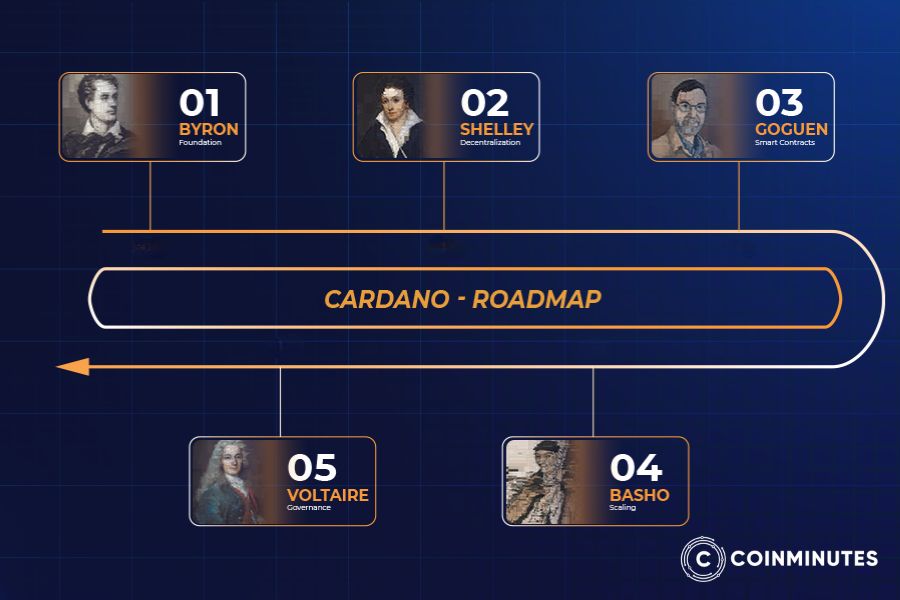
Major Milestones and Achievements
Cardano's biggest milestone was, without a doubt, the Goguen (Alonzo) hard fork in 2021. For years, Cardano was criticized as a "ghost chain" because it had a multi-billion dollar market cap but couldn't actually do anything other than send ADA. The launch of smart contracts was the "put up or shut up" moment for the project.
Another massive achievement, and one that I think shows their real-world focus, is the Ethiopia education deal. In 2021, IOHK announced a major partnership with Ethiopia's Ministry of Education. The project's goal is to create a blockchain-based digital identity and attainment-tracking system for 5 million students, giving them a tamper-proof record of their educational achievements. This is one of the largest real-world blockchain implementations ever attempted. It's not a flashy DeFi app, but it's a deeply practical use of the technology.
How Does Cardano Work?
Cardano's technology is very different from Ethereum's under the hood. Its design is based on two core concepts that, I admit, are pretty elegant: a layered architecture and its unique Proof-of-Stake protocol.
Layered Architecture: Settlement vs. Computation
This is one of the smartest parts of Cardano's design, in my opinion. Instead of mashing everything together into one layer like Ethereum does, Cardano separates its blockchain into two distinct layers:
-
Cardano Settlement Layer (CSL): This is the base layer. Its only job is to handle the accounting. It tracks the ADA token, who owns what, and who is sending it. It's simple, secure, and optimized for one thing: moving value.
-
Cardano Computation Layer (CCL): This is the second layer, which is still being built out. Its job is to handle all the "thinking"—the smart contracts, the dApps, and all the complex computations.
Why is this a big deal? By separating them, Cardano's design ensures that heavy, complex activity on the computation layer (like a popular NFT mint or a laggy DeFi protocol) will not slow down or clog up the simple payment network. It's like having a separate, dedicated highway for trucks and another one for passenger cars. It's a much cleaner design that should, in theory, make the network more flexible and easier to upgrade in the future.

Ouroboros: Cardano’s Proof of Stake Protocol
This is the heart of the network. Ouroboros (pronounced "or-oh-bor-os") is the name of Cardano's custom-built Proof-of-Stake (PoS) consensus mechanism. It's famous for being the first PoS protocol that was developed through formal, peer-reviewed academic research. They didn't just guess; they wrote a scientific paper on it and had other cryptographers try to break it first.
Instead of having all validators compete to make a block, Ouroboros works in "epochs," which are periods of time (currently 5 days). Each epoch is divided into thousands of "slots" (each slot is 20 seconds). For each slot, the network randomly elects a "slot leader" from one of the hundreds of community-run stake pools. That slot leader is the only one with the right to produce a block for that 20-second slot.
This system is incredibly efficient. It doesn't require the massive energy-guzzling competition of Bitcoin's Proof-of-Work. The Cardano Foundation has stated it's over 99.9% more energy-efficient than Bitcoin, which is a major selling point for environmentally-conscious users and institutions.
Smart Contracts and Plutus Platform
This is how developers actually build stuff on Cardano. And it's one of the most controversial decisions the team made. Smart contracts are not written in Solidity (the language of Ethereum). They are built on the Plutus platform, which is based on a programming language called Haskell.
This is a really big deal. Haskell is a "functional" programming language. It's known for being extremely precise, formal, and secure. It's the kind of language you'd use to build software for a nuclear reactor or a space shuttle, which makes it, in theory, perfect for writing high-stakes financial applications where you really don't want any bugs.
The problem? Almost nobody knows how to code in Haskell. It has a notoriously steep learning curve compared to Ethereum's JavaScript-like Solidity. This has, without a doubt, slowed down developer adoption. It requires builders to learn a whole new and difficult skill, which is a big ask when they could just go build on an "good enough" chain like Solana or Polygon.
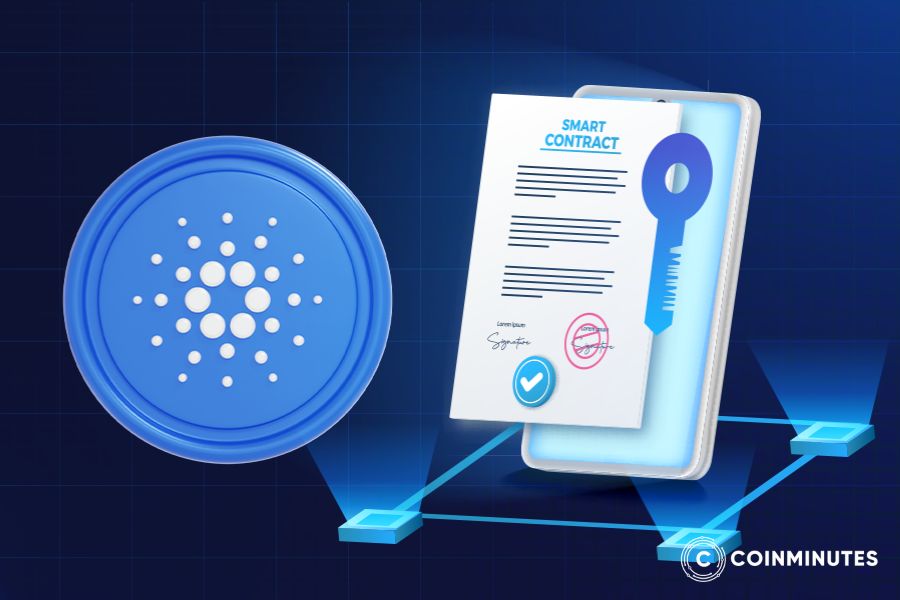
Cardano’s Approach to Security and Decentralization
Cardano's entire security philosophy is "high assurance." The academic, peer-review process is designed to find flaws in the design before it's built, not after it's been hacked.
A key part of its security model is its "eUTXO" (Extended Unspent Transaction Output) model. This is just a fancy name for the accounting model it uses, which is an upgraded version of the one Bitcoin uses. It's very different from Ethereum's "account" model. The simple, practical benefit for you as a user is that this model allows the outcome of a transaction to be predicted before you ever submit it to the network. This means, in theory, you should never have a transaction fail on Cardano and still have to pay a fee—one of the single most frustrating things about using Ethereum.
ADA Token: Utility, Staking, and Economics
The ADA token is the native asset of the Cardano network. It's named after Ada Lovelace, a 19th-century mathematician who is often called the first computer programmer. (You can see the academic, historical theme they're going for).
What is ADA Used For?
The ADA token has three main jobs, but one of them is still loading:
-
Staking: This is its biggest job right now. ADA is used to participate in the Proof-of-Stake consensus. ADA holders can "delegate" their tokens to a stake pool to help secure the network.
-
Transaction Fees: Every transaction on the network, from a simple payment to a complex dApp interaction, requires a small fee that is paid in ADA.
-
Governance: This is the future. In the final Voltaire era, ADA will become a governance token. Holders will use their ADA to vote on the future of the network, including how its massive, community-controlled treasury is spent.

How ADA Staking Works
This is, in my personal opinion, one of the best features of Cardano for the average user. The staking system is incredibly user-friendly and, most importantly, safe.
Unlike many other PoS networks where you have to lock your coins up or send them to a smart contract, Cardano's staking is "liquid" and "non-custodial."
-
Non-Custodial: When you stake your ADA, your coins never leave your wallet. You are not sending them to anyone. You maintain 100% control.
-
Liquid: Your coins are not locked up. You can spend or move your ADA at any time, even while it's "staked."
You simply use your wallet (like Yoroi or Eternl) to "delegate" your wallet's staking rights to a public stake pool of your choice. That's it. You've given that pool your voting power, but not your money. In return, you get a share of the pool's staking rewards, which are paid out automatically every 5-day epoch. It's a brilliantly safe design for users.
ADA Tokenomics
The tokenomics of ADA are very clear and simple, much like Bitcoin's. There is a hard-capped maximum supply of 45 billion ADA. There will never be more than 45,000,000,000. A large portion of the initial supply was sold in a public sale, mostly in Japan, with the rest set aside for the founding entities (IOHK, Cardano Foundation) and for the future staking rewards pool. This fixed supply makes ADA a "disinflationary" asset, meaning the rate of new coins entering the system (via staking rewards) slows down over time. This hard cap is a key part of its appeal as a potential store of value.
Real-World Use Cases & Ecosystem Growth
For years, Cardano was a project with a lot of theory and very few users. Since the launch of smart contracts in 2021, that has slowly started to change, though it still lags far behind its competitors.
Financial Inclusion and Blockchain for Good
This is a core part of Cardano's brand. Charles Hoskinson has been very vocal about his goal of providing financial services to the unbanked, particularly in developing nations.
The Ethiopia education deal is the flagship example of this. In 2021, IOHK announced a major partnership with Ethiopia's Ministry of Education. The project's goal is to build a national student and teacher ID and attainment recording system on the Cardano blockchain. The idea is to provide 5 million students with a tamper-proof digital record of their academic achievements, which they can own and share for their entire lives. This is a massive, real-world pilot for blockchain-based digital identity. It's not a flashy DeFi app, but it's a deeply practical use of the technology that could have a huge social impact.
DeFi, NFTs, and DApps on Cardano
The DeFi and NFT ecosystems on Cardano are still much smaller than Ethereum's, but they are very active and supported by a passionate community. A key technical feature of Cardano that helps here is the ability to create "native tokens."
On Ethereum, creating a new token (like SHIB) is a complex smart contract. On Cardano, a token is a fundamental part of the base layer, just like ADA itself. This makes creating and transacting with new tokens much simpler, cheaper, and more secure.
This has led to a surprisingly vibrant NFT community, with marketplaces like JPG Store handling a lot of volume. The DeFi ecosystem is also growing, with decentralized exchanges like Minswap and SundaeSwap leading the way, although the Total Value Locked (TVL) in Cardano's DeFi is still just a tiny fraction of what's on Ethereum or Solana.
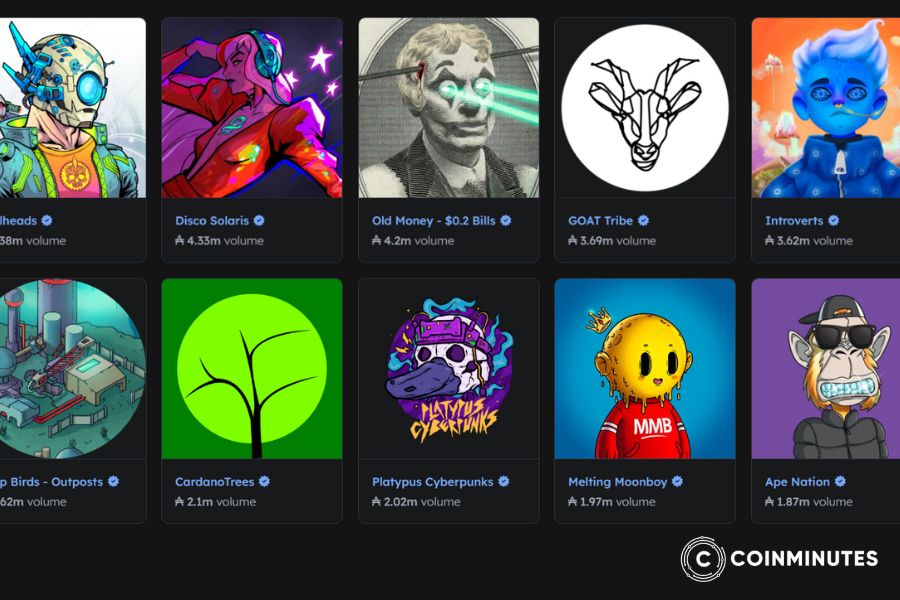
Partnerships, Government Projects, and Enterprise Adoption
Beyond the Ethiopia project, the Cardano Foundation and IOHK have actively pursued partnerships for real-world adoption. These include projects for supply chain tracking (like tracking Georgian wine from vineyard to bottle), anti-counterfeiting solutions for luxury goods, and providing decentralized identity (DID) services. This is where I see them focusing a lot of their non-crypto energy, trying to build a foundation with real-world businesses and governments.
Common Criticisms of Cardano
No balanced discussion of Cardano is complete without addressing the major criticisms leveled against it. As a CoinMinutes analyst, I feel it's crucial to be honest about these.
Development Speed and “Vaporware” Accusations
This is, by far, the #1 criticism. For years, Cardano was a top-10 crypto by market cap before it even had smart contracts. This led to it being called a "ghost chain" or, more harshly, "vaporware" (a product that is announced but never made).
The academic, peer-review process is painstakingly slow. While Ethereum was building a $100+ billion DeFi ecosystem and Solana was building a user base of millions, the Cardano team was publishing academic papers. This methodical pace is either Cardano's greatest long-term strength or its fatal flaw. I personally think the jury is still out. They've proven they can build and ship the tech, but they've given competitors a massive head start in the race for users and developers.
Adoption Challenges and Real-World Usage
The ecosystem is still small. The Total Value Locked (TVL) in Cardano's DeFi ecosystem is a tiny fraction of Ethereum's. A big reason for this, as I mentioned, is the Haskell programming language. It is a huge barrier to entry for the average developer, who is used to JavaScript-like languages (Solidity) or Rust (Solana). Cardano has to do more than just be "secure" on paper; it has to prove that it's a better place for developers to build their businesses, which it has not yet done at a large scale.

How to Buy, Store, and Stake ADA Safely
Alright, so you've done your research, you understand the risks, and you're interested in maybe acquiring some ADA. Doing it safely is the most important part of the whole process. I'm going to walk you through it, step-by-step, with a huge focus on security.
Where to Buy ADA
Since Cardano is one of the biggest and most established projects in the world, buying ADA is actually the easiest part.
For 99% of beginners, the best way to buy is from a major, reputable centralized exchange (CEX). These are the big, brand-name companies you've heard of, like Coinbase, Kraken, or Binance. The reason I recommend these for beginners is that they are regulated, they have customer support, and they let you buy crypto directly with your local currency (like USD, EUR, etc.) using your bank account or debit card. You'll have to sign up and verify your identity (a process called KYC, where you upload a picture of your driver's license), but it's a straightforward process.
For more advanced users, you can also buy ADA on a decentralized exchange (DEX), like Minswap or SundaeSwap, which run on the Cardano blockchain itself. This is a bit more complicated as you'll need an existing crypto wallet with other funds to trade from. If you're just starting, stick to the major centralized exchanges.
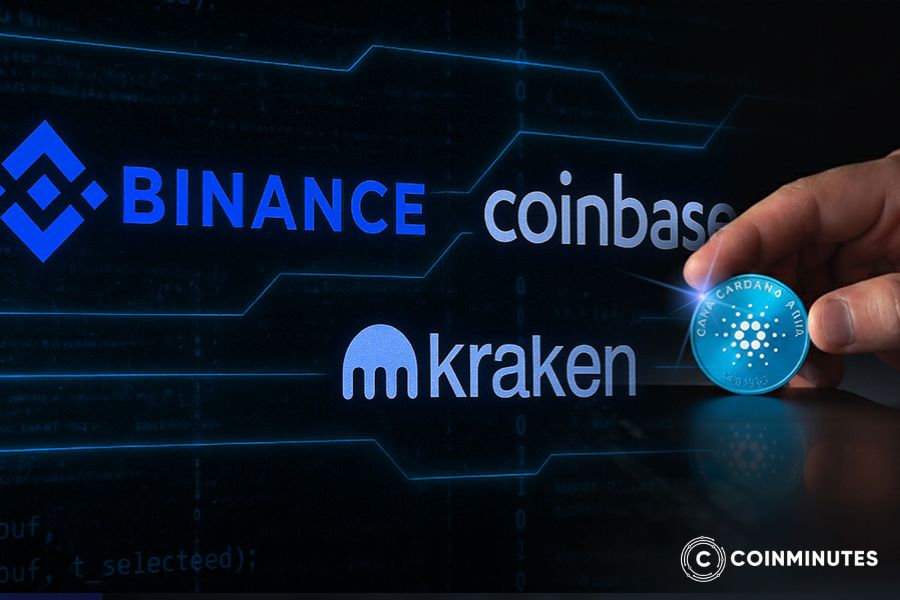
How to Store ADA
This is, in my opinion, the most critical part of this entire guide. Please read this section twice.
When you buy crypto on an exchange like Coinbase, you don't actually hold it. Coinbase holds it for you, in their giant corporate wallet. This is called a "custodial" wallet. And it comes with a huge risk. If the exchange gets hacked, goes bankrupt (like the FTX disaster), or freezes your account, your funds could be gone. Forever.
The golden rule of crypto is: "Not your keys, not your crypto."
To truly own your ADA, you must withdraw it from the exchange to a personal wallet that you control. This is called "self-custody." When you create your own wallet, you are given a secret 12 or 24-word "seed phrase." This phrase is your money. It's the master key to your funds. You must write it down on paper (never store it on your computer or in a screenshot!) and hide it somewhere safe.
You have two main types of personal wallets:
-
Hot Wallets (Software): These are apps for your phone or computer. For Cardano, the most popular and trusted wallets are Yoroi, Eternl, and Nami. They're "hot" because they're connected to the internet, which makes them convenient for staking and using dApps, but slightly less secure.
-
Cold Wallets (Hardware): This is the gold standard for security. A cold wallet is a small physical device, like a Ledger or Trezor, that keeps your seed phrase completely offline, safe from hackers. If you're going to invest an amount of money that you would be genuinely upset to lose, I strongly believe you must get one of these.
ADA Staking: Step-by-Step Guide
Here's the great news: staking on Cardano is, in my opinion, one of the safest and most user-friendly systems in all of crypto. As I mentioned before, your ADA never leaves your wallet and is never locked up. You're just delegating your wallet's rights, not your actual coins.
Here's the simple process:
-
Get a Personal Wallet: Buy your ADA on an exchange and immediately withdraw it to your own secure software wallet (like Yoroi or Eternl) or hardware wallet.
-
Find the "Staking" Section: Inside your wallet, there will be a tab or a button that says "Delegation" or "Staking Center." Click it.
-
Choose a "Stake Pool": You'll see a long list of "stake pools." These are the community-run validator nodes that are actually doing the work of securing the network. You're just choosing which one to support with your "vote."
-
How to Choose a Pool: Don't just pick one at random. Look for a pool that has a good performance record (ideally 99-100% uptime) and is not "saturated." A pool is saturated if it has too much ADA delegated to it, which will cause your rewards to decrease. It's healthier for the network to choose a smaller, independent pool.
-
Click "Delegate": Once you've picked a pool, you'll just click a "Delegate" button. You'll have to pay a one-time network fee (usually very small, less than 1 ADA) to register your staking key.
And that's it. You're done. Your ADA is still in your wallet, you can spend it or move it at any time, and you'll start receiving your staking rewards automatically. The network runs in 5-day periods called "epochs." When you first delegate, it'll take a few epochs (about 15-20 days) for your stake to become active, but after that, you'll receive your rewards at the end of every 5-day epoch.
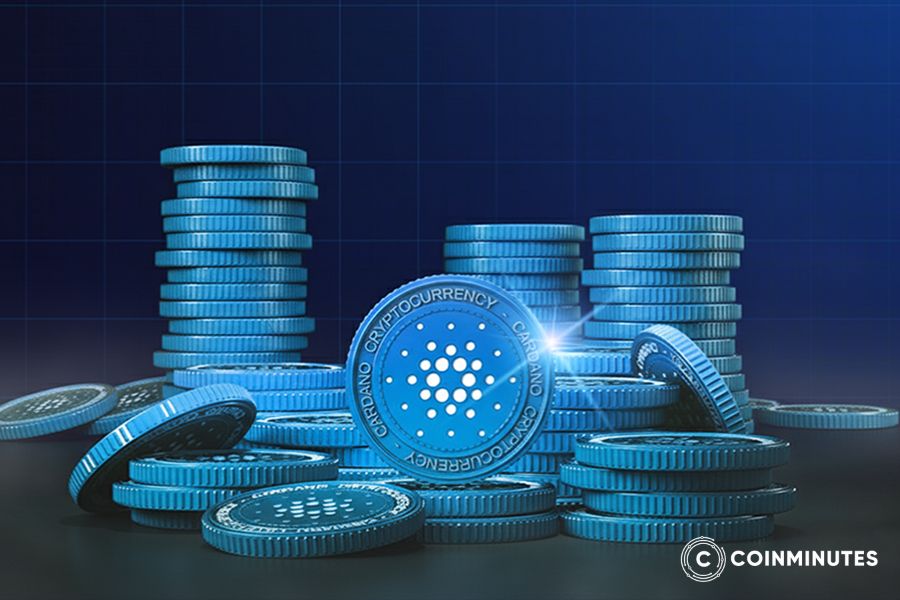
Regulatory and Tax Considerations
This is the boring but critical part you can't ignore. The legal status of cryptocurrencies is a giant, messy, unresolved question, especially in the United States.
The U.S. Securities and Exchange Commission (SEC) has explicitly named ADA as a security in its lawsuits against major exchanges. This is a very big deal. This legal battle is still ongoing, and it hangs over the project like a dark cloud. If a court eventually agrees with the SEC, it could make it very difficult for U.S.-based exchanges like Coinbase to continue listing ADA, which would be very bad for its price and accessibility. This is a major risk, and you have to be aware of it.
On the tax side, it's simple but painful: crypto is treated as property. This means you have to keep records.
-
When you sell your ADA for cash, you pay capital gains tax on the profit.
-
When you trade your ADA for another crypto (like ETH), that's also a taxable event.
-
When you spend your ADA to buy something (like an NFT), that is also a taxable event.
The staking rewards you earn are also generally considered income. It's complicated. My strong advice, and a core part of the CoinMinutes philosophy, is to talk to a qualified tax professional in your country. Don't try to guess at this stuff.
The Future of Cardano
So, what's next for the "science project" of crypto? The future is all about delivering on the final two eras of the roadmap: Basho and Voltaire.
The Basho era is all about scaling. The core team is focused on improving the network's performance so it can handle millions of users. The main upgrade on the horizon is Hydra, which is Cardano's "Layer 2" solution. A Hydra "head" is like a private, off-chain transaction channel between a group of users (like a gaming app) that can process transactions almost instantly, only settling the final results on the main blockchain.
But the most exciting part, in my opinion, is the Voltaire era. This is the final step: true decentralization. Voltaire will introduce a full on-chain governance system and a community treasury. This means that ADA holders themselves will be able to propose and vote on everything—from software upgrades to funding new projects. The network's future will be in the hands of its community, not IOHK. This is the end-game for Cardano: to become a fully self-sustaining, community-owned digital nation.
Continue Your Crypto Journey with CoinMinutes
Cardano is, without a doubt, one of the most serious and ambitious projects in the entire cryptocurrency space. It made a huge, controversial bet on a slow, academic, and methodical approach. This has made it a target of criticism for its slow progress, but it has also earned it a massive, loyal community that believes in its long-term vision of building a secure and fair global platform.
The coming years will be critical as Cardano works to scale its technology and fully hand over control to its community. It's a project that requires patience, but it's one that can't be ignored.
The crypto world is deep and constantly changing. At CoinMinutes, we're committed to breaking down these complex topics into simple, clear guides to help you on your journey. We believe that a smarter crypto user is a safer crypto user. Keep learning, and thanks for reading with CoinMinutes.
 English
English
 Vietnamese
Vietnamese








